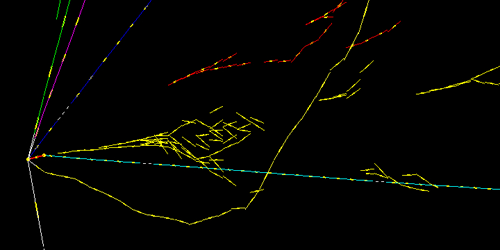OPERA’s Final Stamp on Neutrino Oscillations
The OPERA experiment at the Gran Sasso National Laboratory in Italy was designed to detect the type of neutrino oscillation in which a muon-flavored neutrino changes into a tau-flavored neutrino. The experiment, which ran between 2008 and 2012, searched for tau neutrinos appearing within a beam of muon neutrinos generated at CERN in Switzerland. The detection of five tau neutrinos allowed OPERA to claim the discovery of muon-tau neutrino oscillations in 2015. The same collaboration now reports an updated analysis showing that OPERA detectors actually caught sight of ten tau neutrinos. The new results also provide more accurate estimates of parameters describing neutrino oscillations and tau neutrino properties.
Oscillations between neutrinos of different flavors are only possible if neutrinos have mass. While several experiments have seen neutrino oscillations, researchers are still striving to improve the precision of measurements of the process, which could reveal details of the mechanisms that give neutrinos their mass. OPERA’s final analysis of their data relies on a strategy that, compared with the previous strategy, is better optimized to discriminate between tau neutrinos and muon neutrinos. The new analysis suggests that out of 19,505 detected neutrinos, ten were tau neutrinos, which boosts the statistical confidence in the oscillation detection compared with the 2015 report. The reduction of the statistical uncertainties also allowed the collaboration to improve on their previous estimate of the mass difference between neutrino types and of the probability for a tau neutrino to interact with matter and produce a tau lepton.
This research is published in Physical Review Letters.
–Matteo Rini
Matteo Rini is the Deputy Editor of Physics.





